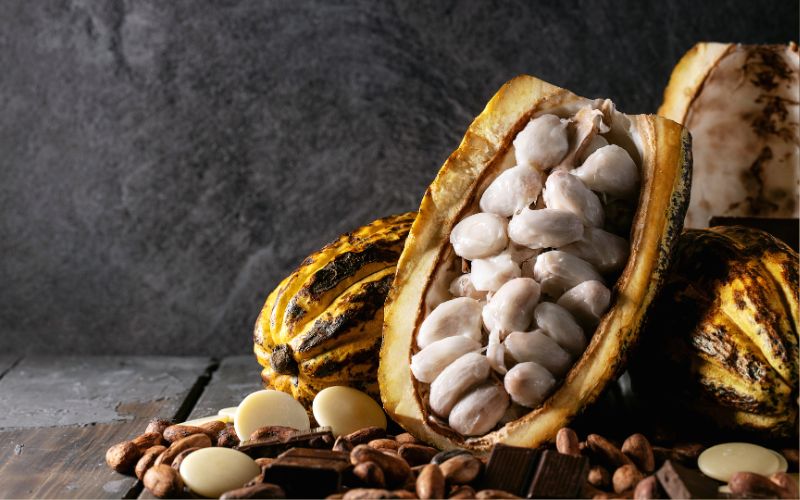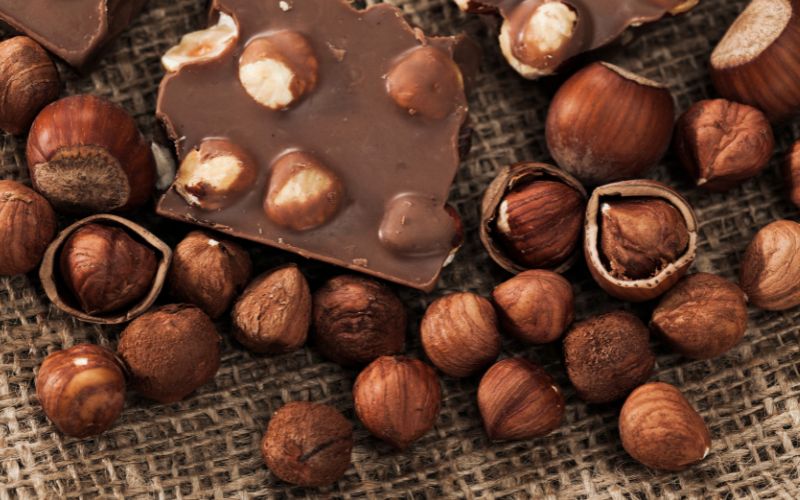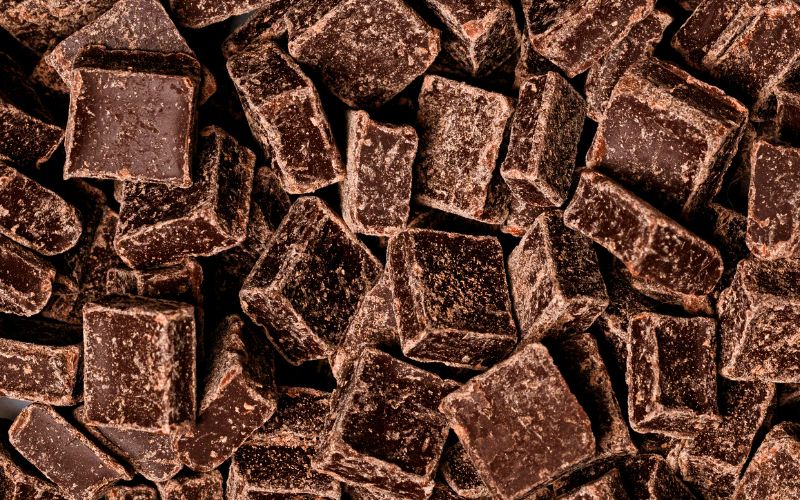Introduction to Cocoa Seeds
Cocoa seeds, the fundamental ingredient of chocolate, are seeds of promise and flavor. Born from the Theobroma cacao tree, a name that fittingly means “food of the gods,” these seeds have a rich history that dates back thousands of years. Originating in the lush rainforests of the Americas, cocoa seeds were a treasured commodity in ancient civilizations like the Maya and Aztecs, often used as currency and in ceremonial rituals.

Understanding cocoa begins with an appreciation of its varieties. There are primarily three types of cocoa plants: Criollo, Forastero, and Trinitario. Criollo, known for its delicate and complex flavors, is the rarest and most prized. Forastero, the most common variety, is hearty and robust, forming the backbone of global cocoa production. Trinitario is a hybrid of the two, offering a balance of fine flavor and hardiness. Each variety contributes uniquely to the vast spectrum of chocolate flavors we enjoy today.
The story of cocoa is not just about taste; it's a narrative of transformation and magic, where simple seeds metamorphose into a global sensation – chocolate. This guide takes you on a journey from the humble origins of cocoa seeds to the luxurious chocolate bars we savor, unveiling the hidden complexities and enchantments of this extraordinary seed.
Cocoa Cultivation: A Detailed Overview
Cocoa cultivation is a tale of harmony with nature. The growing of cocoa is as much an art as it is a science, requiring a unique set of climatic conditions. Cocoa trees flourish in the warm, moist environment found within 20 degrees north and south of the Equator. They thrive under the canopy of rainforests, where the dappled sunlight and high humidity create an ideal nursery for these delicate trees.
But it’s not just about the right temperature or rainfall. The soil plays a crucial role too. Cocoa trees favor rich, well-drained soils, often found in the tropical rainforests. Farmers pay great attention to land preparation, ensuring the soil retains just the right amount of moisture and nutrients. This careful tending of the land ensures that the cocoa trees grow healthy and strong, capable of producing the best quality cocoa beans.
Cultivating cocoa isn't just planting a tree and waiting for it to bear fruit. It's a commitment, a relationship between the farmer and the land. Every step, from selecting the right spot to plant the saplings to nurturing them as they grow, is done with care and respect for the environment. This symbiotic relationship between the cocoa farmer and nature is what makes cocoa cultivation so unique and special.
The Lifecycle of Cocoa Seeds

The journey of a cocoa seed is a marvel of nature. It all begins with the flowering of the cocoa tree, a process that occurs throughout the year. The tree's tiny flowers, though not as showy as other tropical blooms, are a crucial part of cocoa's lifecycle. Only a fraction of these flowers will be pollinated to form cocoa pods, a testament to the delicate balance of nature.
Once pollinated, the flower gives way to the cocoa pod, a vibrant vessel that cradles the precious cocoa seeds. These pods, ranging in color from deep purples to bright yellows, take about five to six months to mature. Inside each pod are the cocoa seeds, enveloped in a sweet, tangy pulp.
Harvesting these pods is a task that demands precision and timing. Farmers must carefully select pods that are ripe and ready, as the maturity of the pod directly impacts the quality of the cocoa beans. This harvesting process is often done by hand, using a machete to skillfully remove the pods from the tree without damaging the bark. It’s a skill that takes years to perfect, a blend of art and expertise passed down through generations.
Once harvested, the real magic begins. The pods are opened, and the seeds, along with the surrounding pulp, are extracted. It's at this point that the seeds begin their transformation into what will eventually become chocolate. But before they get there, they must go through the crucial stages of fermentation and drying – processes that are vital in developing the complex flavors of cocoa.
Processing Cocoa Seeds
Diving into the world of cocoa processing, we uncover the essential steps that transform raw cocoa seeds into the flavorful beans ready for chocolate making. It all begins with fermentation, a natural alchemy where science meets art. During fermentation, the cocoa seeds and pulp are placed in large containers or heaped on banana leaves, typically covered with mats or more leaves. This process, lasting about five to seven days, is a critical phase where the seeds develop their rich, complex flavors and lose their initial bitterness. Natural yeasts and bacteria play a symphony, breaking down the sugars in the pulp, generating heat, and creating an environment where the cocoa seeds undergo chemical changes, developing their characteristic chocolate flavor and brown color.
But the journey isn't over yet. After fermentation, the seeds – now referred to as beans – are spread out to dry. Drying is as much an art as fermentation. The beans are laid out in the sun, often on large trays or bamboo mats. Here, they are regularly turned by hand to ensure even drying. This careful process, which can take up to a week, is crucial to prevent mold and to reduce the moisture content to about 7-8%. It's during this stage that the beans develop a more concentrated flavor, setting the stage for the next exciting phase in their journey – roasting.
Chocolate Making: From Beans to Bars
Now, let’s take a peek into the enchanting process of turning cocoa beans into chocolate. This magical transformation begins with roasting, where the beans are heated to bring out their rich aroma and flavor. Each chocolate maker has their secret when it comes to roasting – temperature, time, and technique all play a part in defining the final flavor profile of the chocolate.
Once roasted, the beans are cracked open, and the shells are removed, leaving behind the cocoa nibs – the essence of chocolate. These nibs are then ground into a fine paste known as chocolate liquor, a term that can be misleading as it contains no alcohol. It's from this point that the diversity of chocolate products begins to emerge. For dark chocolate, the liquor is further refined, sugar and sometimes additional cocoa butter are added. Milk chocolate sees the addition of milk powder to this mix, while white chocolate is made from cocoa butter without the cocoa solids.

Conching is the next critical step, a process of continuous mixing and aerating the chocolate over several hours, which enhances its texture and flavor. The length of conching can vary, and like roasting, each chocolatier’s method is a closely guarded secret. This process smoothens the chocolate, developing a silky texture and mellowing any remaining acidic notes.
From here, the chocolate is tempered – a careful process of heating and cooling that stabilizes the cocoa butter crystals, giving the finished chocolate bar its glossy appearance and crisp snap. Finally, the chocolate is poured into molds, cooled, and wrapped – ready to be savored by chocolate lovers around the world.
Health Benefits of Cocoa
Cocoa isn't just a treat for the taste buds; it's also a boon for health. Tucked within those humble cocoa seeds are a treasure trove of health benefits. The nutritional profile of cocoa is impressive; it's packed with antioxidants, minerals like iron, magnesium, and zinc, and contains a good amount of fiber.
One of the most celebrated aspects of cocoa is its impact on cardiovascular health. Thanks to its high content of flavonoids – powerful antioxidants – regular consumption of cocoa has been linked to improved blood flow and lower blood pressure. These flavonoids help to relax blood vessels, promoting heart health and potentially reducing the risk of stroke and heart attack.
But the benefits don’t stop there. Cocoa is also known for its mood-enhancing properties. It contains compounds that can increase serotonin and endorphin levels in the brain, often leading to a feeling of well-being and happiness. This might explain why we often reach for chocolate when we need a mood booster!
It's important to note, though, that not all chocolate products offer these health benefits in equal measure. Dark chocolate with a high cocoa content is usually the best choice, as it contains more of the beneficial compounds and less sugar and fat compared to milk or white chocolate.
Sustainable Cocoa Farming
As much as we love chocolate, it's crucial to acknowledge the challenges and responsibilities that come with cocoa cultivation. Sustainable cocoa farming is about ensuring that the production of cocoa seeds not only supports farmers and their communities but also protects the environment.
One of the biggest challenges in cocoa farming is the pressure it puts on land, often leading to deforestation and loss of biodiversity. Sustainable practices involve methods that protect the environment, like shade-grown cocoa, which helps preserve natural habitats and promotes biodiversity.
Furthermore, the cocoa industry faces significant social challenges, including fair labor practices and ensuring farmers receive a livable income. Initiatives like Fair Trade and Rainforest Alliance certifications are stepping stones towards more ethical sourcing, ensuring that farmers are paid fairly and work in good conditions.
Sustainable cocoa farming is not just a responsibility; it's a necessity. By supporting sustainable practices, we ensure that the magic of cocoa can continue for generations to come, both for the farmers who cultivate it and the consumers who enjoy it.
Cocoa in Culinary Arts

Cocoa seeds, the cornerstone of chocolate, have a much broader culinary canvas than many realize. In the realm of cooking and baking, cocoa is a versatile ingredient that adds depth, richness, and flavor to a myriad of dishes.
Culinary enthusiasts often experiment with cocoa in both sweet and savory contexts. From the classic use in cakes, cookies, and desserts to its intriguing role in sauces, stews, and rubs for meats, cocoa's potential is boundless. Its rich, slightly bitter profile can enhance the complexity of a dish, offering a counterbalance to sweetness or adding a layer of flavor to savory creations.
Innovative cocoa recipes are continually emerging, showcasing this ingredient's adaptability. Think beyond the traditional chocolate cake to dishes like cocoa-infused chili, mole sauces, or even cocoa-dusted artisanal cheeses. The key to using cocoa in cooking is understanding its flavor profile and how it interacts with other ingredients, creating a harmonious and delightful culinary experience.
Cocoa Seeds and Global Trade
The journey of cocoa seeds doesn't end at the farm. They are a global commodity, playing a significant role in the world's economy. The economics of cocoa production are complex, involving farmers, traders, chocolate makers, and consumers across continents.
Cocoa is predominantly grown in West Africa, Latin America, and Southeast Asia, with countries like Ivory Coast, Ghana, and Indonesia being major producers. The global trade of cocoa seeds involves not just the selling and buying of the raw beans but also the intricate dynamics of pricing, demand, and supply.
Fair Trade and ethical sourcing are vital aspects of the cocoa trade. These initiatives aim to ensure that the benefits of cocoa production reach the farmers who grow the crops, often in developing countries. By addressing issues like price fluctuations and unfair practices, Fair Trade helps in creating a more equitable and sustainable cocoa industry.
Cocoa's journey from a farmer's field to a chocolate bar on a supermarket shelf is a story of globalization. It's a commodity that connects us all, transcending borders and cultures.
Cocoa and Cultural Significance
Cocoa seeds hold a special place in many cultures around the world. Its significance can be traced back to ancient civilizations, where it was revered as a divine gift. For the Maya and Aztecs, cocoa was not just a food item but a sacred symbol, used in religious rituals and as a form of currency.
In modern times, cocoa and chocolate continue to play a significant role in celebrations and social gatherings. Be it Valentine's Day, Easter, or simply a family gathering, chocolate is often at the heart of these moments. Cocoa has transcended its original use to become a universal symbol of love, comfort, and celebration.
The cultural significance of cocoa is not just about its consumption but also about the traditions and rituals that have evolved around it. From the chocolate-making ceremonies in Mexico to the fine art of chocolate tasting in Belgium, cocoa seeds have inspired a rich tapestry of cultural practices that are cherished and celebrated worldwide.
Innovations in Cocoa Processing
The world of cocoa processing is not static; it's a landscape marked by constant innovation and technological advancements. These innovations aim not only to enhance the quality of chocolate but also to address the challenges faced in the cocoa industry.
One key area of innovation is in the fermentation and drying processes. New techniques and equipment are being developed to optimize these stages, ensuring consistent quality and flavor profiles. For example, controlled fermentation systems allow for precise management of temperature and humidity, leading to a more uniform and high-quality end product.
Technological advancements also extend to sustainable practices. Innovations in farming techniques, such as improved irrigation systems and eco-friendly pest control, are helping cocoa farmers increase yields while minimizing environmental impact. This marriage of technology and tradition is paving the way for a more sustainable and prosperous future for cocoa farming.
Cocoa Seeds: The Ultimate Guide to Chocolate Magic
Crafting artisan chocolates is an art form that combines creativity with a deep understanding of the raw material – cocoa seeds. Artisan chocolatiers are like alchemists, turning the humble cocoa bean into exquisite chocolate creations. This process involves not only skill and precision but also a passion for exploring the myriad possibilities that cocoa seeds offer.
The art of tasting chocolate is akin to wine tasting. It's about savoring the complex flavors, aromas, and textures that chocolate presents. When tasting chocolate, one should pay attention to the appearance, snap, aroma, and finally, the flavor profile, which can range from fruity and floral to nutty and spicy. This sensory journey allows one to appreciate the nuances and subtleties of different chocolates, each telling its own story of origin, variety, and craftsmanship.
Frequently Asked Questions (FAQs)
-
What is the best climate for growing cocoa seeds? Cocoa trees thrive in humid, tropical climates, typically within 20 degrees north or south of the Equator. They require consistent temperatures, ample rainfall, and protection from direct sunlight.
-
How are cocoa seeds processed into chocolate? Cocoa seeds undergo fermentation, drying, roasting, grinding, and conching to transform into chocolate. Each step is crucial in developing the flavor and texture of the final product.
-
Can cocoa consumption improve health? Yes, cocoa is rich in antioxidants and minerals and has been linked to various health benefits, including improved heart health and mood enhancement. However, it's best consumed in moderation and as part of a balanced diet.
-
What are the challenges in sustainable cocoa farming? Key challenges include environmental concerns like deforestation, social issues like fair labor practices, and economic factors such as price fluctuations and fair compensation for farmers.
-
How does cocoa trade impact the global economy? Cocoa is a significant commodity in the global economy, impacting the livelihoods of millions of farmers and contributing to the economies of producing countries. The trade also influences global markets and consumer industries.
-
What innovations are shaping the future of cocoa processing? Innovations include controlled fermentation techniques, sustainable farming practices, and advancements in chocolate manufacturing technologies, all contributing to higher quality and more sustainable cocoa production.
Conclusion
Cocoa seeds, small yet mighty, are the heart of a journey that spans from ancient rituals to modern-day delights. "Cocoa Seeds: The Ultimate Guide to Chocolate Magic" has taken us through the enchanting world of cocoa, revealing its cultural significance, health benefits, and the meticulous process that turns these seeds into the chocolate we adore. The story of cocoa is a testament to human ingenuity and our enduring love affair with this magical bean. As we continue to savor and appreciate chocolate, let us also remember the importance of sustainable practices and ethical sourcing, ensuring that the magic of cocoa can be enjoyed for generations to come.



